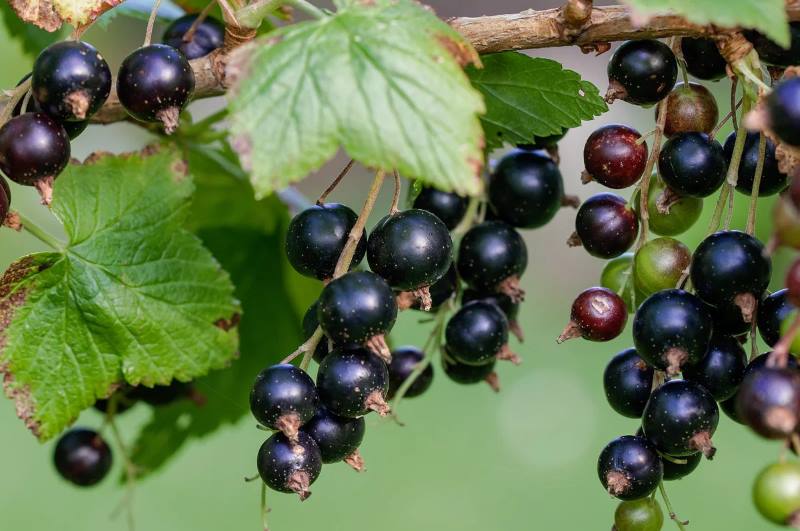MINERAL COMPOSITION OF WILD BERRY FRUITS FROM THE FOREST ZONE OF THE CITY OF MAGADAN
UDC 615.322:582.912.46(571.56+571.65)
Abstract
In the study, the method of atomic emission and mass spectrometry with inductively coupled argon plasma was used to determine average concentrations of macronutrients (Ca, K, Mg, Na, P), essential trace elements (Cu, Fe, I, Mn, Se, Zn) and conditionally essential trace elements (B, Co, Cr, V, Si, Li, Ni), as well as toxic metals (Al, As, Cd, Hg, Pb, Sr, Sn) in wild berries most often included in diets of Magadan region residents: Blue honeysuckle (Lonicera caerulea L., Caprifoliaceae), Ash berry (Sorbus aucuparia L., Rosaceae), Black currant (Ribes nigrum L., Grossulariaceae), Lingonberry (Vaccinium vitis-idaea L., Ericaceae).
The highest total amount of elements under study was found in samples of the Ash berry (36.8%), the lowest – in the Lingonberry (8.9%). Data obtained on quantitative mineral composition of berries exhibited different accumulation variables for each of studied elements and statistically significant differences in their concentrations. Amounts of calcium, potassium, magnesium, phosphorus, and silicon were found to be the highest. Toxic element analysis observed no excess of permissible levels. Thus, the woods of the northern region people’s traditional berry picking can be referred to an environmentally safe zone.
Downloads
Metrics
References
Skal'nyy A.V. Khimicheskiye elementy v fiziologii i ekologii cheloveka. [Chemical elements in human physiology and ecology]. Moscow, 2004, 216 p. (in Russ.).
Martin S., Griswold W. Environ. Sci. Technol. Briefs Citiz., 2009, vol. 15, pp. 1–6.
Klavins L., Maaga I., Bertins M. et al. Foods, 2021, vol. 10, pp. 567–579. DOI: 10.3390/foods10030567.
Nile S.H., Park S.W. Nutrition, 2014, vol. 30, pp. 134–144. DOI: 10.1016/j.nut.2013.04.007.
Afanas'yeva L.V. Khimiya rastitel'nogo syr'ya, 2016, no. 3, pp. 103–108. DOI: 10.14258/jcprm.2016031197. (in Russ.).
Kelimkhanova S.Ye., Bayelova A.Ye., Kozhamzhanova A.S. Vestnik KazNMU im. S.D. Asfendiarova, 2010, vol. 5, no. 3, pp. 219–221. (in Russ.).
Szajdek A., Borowska E. Plant Foods Human Nutr., 2008, vol. 63, pp. 147–156. DOI: 10.1007/s11130-008-0097-5.
Rodushkin I., Ödman F., Holmström H. Sci. Total Environ., 1999, vol. 231, pp. 53–65. DOI: 10.1016/S0048-9697(99)00080-7.
Pöykiö R., Mäenpää A., Perämäki P., Niemelä M., Välimäki I. Arch. Enviorn. Contam. Toxicol., 2005, vol. 48, pp. 338–343. DOI: 10.1007/s00244-004-0074-4.
Nagajyoti P.C., Lee K.D., Sreekanth T.V. Environ. Chem. Lett., 2010, vol. 8, pp. 199–216. DOI: 10.1007/s10311-010-0297-8.
Karlsons A., Osvalde A., Cekstere G., Pormale J. Agron. Res., 2018, vol. 16, pp. 454–463.
Sosorova S.B., Merkusheva M.G., Ubugunov L.L. Khimiya rastitel'nogo syr'ya, 2016, no. 2, pp. 53–59. (in Russ.).
Andreyeva V.Yu., Isaykina N.V., Tsybukova T.N., Petrova Ye.V. Khimiya rastitel'nogo syr'ya, 2016, no. 1, pp. 177–180. DOI: 10.14258/jcprm.201601893. (in Russ.).
Chepeleva G.G., Timoshin A.V. Khimiya rastitel'nogo syr'ya, 2007, no. 4, pp. 125–126. (in Russ.).
Berkutenko A.N., Virek E.G. Lekarstvennyye rasteniya i pishchevyye rasteniya Alyaski i Dal'nego Vostoka Rossii. [Medicinal plants and food plants of Alaska and the Far East of Russia]. Vladivostok, 1995, 192 p. (in Russ.).
Tikhmenev Ye.A., Chastukhina S.A. Pishchevyye i lekarstvennyye rasteniya flory Magadanskoy oblasti: ucheb.-metod. posobiye. [Food and medicinal plants of the flora of the Magadan region: a teaching aid]. Magadan, 2011, 105 p. (in Russ.).
Pugachev A.A., Tikhmenev Ye.A. Izvestiya Samarskogo nauchnogo tsentra RAN, 2016, vol. 18, no. 5-3, pp. 478–483. (in Russ.).
Pugachev A.A. Vestnik SVNTS DVO RAN, 2007, no. 1, pp. 58–63. (in Russ.).
Koval'skiy V.V. Geokhimicheskaya sreda i zhizn'. [Geochemical environment and life]. Moscow, 1982, 76 p. (in Russ.).
Zuyev I.A., Serezhnikov A.I. Kolyma, 1998, no. 3, pp. 2–8. (in Russ.).
Lugovaya Ye.A., Stepanova Ye.M. Gigiyena i sanitariya, 2016, vol. 95, no. 3, pp. 241–246. DOI: 10.18821/0016-9900-2016-95-3-241-246. (in Russ.).
Metodicheskiye rekomendatsii MR 2.3.1.243208. Normy fiziologicheskikh potrebnostey v energii i pishchevykh veshchestvakh dlya razlichnykh grupp naseleniya Rossiyskoy Federatsii. [Guidelines MR 2.3.1.243208. Norms of physiological needs for energy and nutrients for various groups of the population of the Russian Federation]. Moscow, 2008, 36 p. (in Russ.).
Yedinyye sanitarno-epidemiologicheskiye i gigiyenicheskiye trebovaniya k produktsii (tovaram), podlezhashchey sa-nitarno-epidemiologicheskomu nadzoru (kontrolyu) (s izmeneniyami na 8 dekabrya 2020 goda). [Uniform sanitary and epidemiological and hygienic requirements for products (goods) subject to sanitary and epidemiological supervision (control) (as amended on December 8, 2020)]. URL: http://docs.cntd.ru/document/902249109. (in Russ.).
Tekhnicheskiy reglament Tamozhennogo soyuza TR TS 0021/2011. «O bezopasnosti pishchevoy produktsii» (s iz-meneniyami na 8 avgusta 2019 goda). [Technical regulation of the Customs Union TR CU 0021/2011. "On food safe-ty" (as amended on August 8, 2019)]. URL: http://docs.cntd.ru/document/902320560. (in Russ.).

Copyright (c) 2022 chemistry of plant raw material

This work is licensed under a Creative Commons Attribution 4.0 International License.

This work is licensed under a Creative Commons Attribution 4.0 International License.
The authors, which are published in this journal, agree to the following conditions:
1. Authors retain the copyright to the work and transfer to the journal the right of the first publication along with the work, at the same time licensing it under the terms of the Creative Commons Attribution License, which allows others to distribute this work with the obligatory indication of the authorship of this work and a link to the original publication in this journal .
2. The authors retain the right to enter into separate, additional contractual agreements for the non-exclusive distribution of the version of the work published by this journal (for example, to place it in the university depository or to publish it in a book), with reference to the original publication in this journal.
3. Authors are allowed to post their work on the Internet (for example, in a university repository or on their personal website) before and during the review process of this journal, as this may lead to a productive discussion, as well as more links to this published work.











